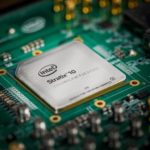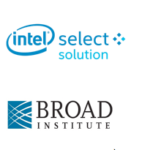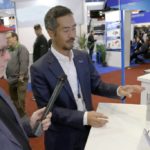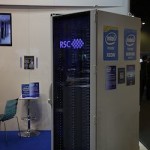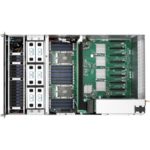Today Intel announced top-tier OEM adoption of Intel’s field programmable gate array (FPGA) acceleration in their server lineup. This is the first major use of reprogrammable silicon chips to help speed up mainstream applications for the modern data center. “We are at the horizon of a new era of data center computing as Dell EMC and Fujitsu put the power and flexibility of Intel FPGAs in mainstream server products,” said Reynette Au, vice president of marketing for the Intel Programmable Solutions Group. “We’re enabling our customers and partners to create a rich set of high-performance solutions at scale by delivering the benefits of hardware performance, all in a software development environment.”
Broad Institute and Intel Advance Genomics
The Broad Institute of MIT and Harvard in collaboration with Intel, is playing a major role in accelerating genomic analysis. This guest post from Intel explores how the two are working together to ‘reach levels of analysis that were not possible before.’
Eni in Italy Launches 18.6 Petaflop HPC4 Supercomputer
Eni in Italy has launched its new HPC4 supercomputer. With a peak performance of 18.6 Petaflops, the HPC4 cluster from Hewlett Packard Enterprise quadruples the Company’s computing power, making it the world’s most powerful industrial system. “With HPC4 we are tracing the path for the use of exascale supercomputers in the energy sector that could revolutionize the way in which oil&gas activities are managed.”
Lenovo to Build 26.7 Petaflop SuperMUC-NG Cluster for LRZ in Germany
“Upon its completion in late 2018, the new Lenovo supercomputer (called SuperMUC-NG) will support LRZ in its groundbreaking research across a variety of complex scientific disciplines, such as astrophysics, fluid dynamics and life sciences, by offering highly available, secure and energy-efficient high-performance computing services that leverage industry-leading technology optimized to address the a broad range of scientific computing applications. The LRZ installation will also feature the 20-millionth server shipped by Lenovo, a significant milestone in the company’s data center history.”
Supermicro Booth Tour Showcases HPC Innovation at SC17
In this video, Akira Sano provides a tour of the Supermicro booth at SC17 in Denver. “Supermicro offers the best selection of leading HPC optimized servers in the industry as evidenced by the recent selection of our twin architecture by the NASA Center for Climate Simulation (NCCS).”
Intel Xeon Scalable Processors come to Penguin on Demand HPC Cloud
Penguin Computing has announced plans to deploy more than 11,500 cores of the latest Intel Xeon Scalable processor in their Penguin Computing On-Demand HPC cloud. “The latest Intel Xeon Scalable processor expansion will provide an ideal compute environment for MPI workloads that can leverage thousands of cores for computation. We have significant customer demand for POD HPC cloud in applicable areas like high-resolution weather forecasting and computational fluid dynamics, including solutions from software partners like ANSYS, Flow Science and CD-adapco.”
Russian RSC Group Joins the Intel Select Solutions for HPC Program
Last week at SC17, Russian HPC vendor RSC Group showcased the next generation of their liquid-cooled RSC Tornado supercomputers based on Intel Xeon Scalable Processors. “RSC is demonstrating a full set of components for modern HPC computing systems of different scale with 100% direct liquid cooling in ‘hot water’ mode, including high-performance RSC Tornado computing nodes based on the top-bin Intel Xeon Platinum and Intel Xeon Gold processors (part of the Intel Xeon Scalable platform), Intel Server Board S2600BP, high-speed NVMe solid state drives in high-dense М.2 format and the latest Intel Optane SSD DC P4800X Series. The RSC Tornado solution is built using 100% direct liquid cooled Intel Omni-Path Edge Switch 100 Series that ensures end-to-end efficiency of the cooling solution with ‘hot water’ and eventually the lowest possible total cost of ownership of the system.”
Intel Xeon Processors and Intel Omni-Path Architecture Offer Breakthroughs for Top500 Systems
Last week, the rhetorical one-two punch of the Intel HPC Developer Conference and Supercomputing 2017 offered global HPC aficionados new insights into the direction of advanced HPC technologies, and how those tools will empower the future of discovery and innovation. In case you missed it, here is a breakdown of all the action.
Supermicro Powers Advanced Analytics at NASA NCCS
Today Supermicro announced that the company has partnered with the NASA Center for Climate Simulation (NCCS) to expand advanced computing and data analytics used to study the Earth, solar system and universe. Based on the combination of density, system performance and optimized cost, the Supermicro FatTwin-based solution brings an additional 1.56 PetaFlops to NASA researchers. The Rack Scale solution is factory integrated at Supermicro’s Silicon Valley headquarters to deliver optimal reliability and efficiency.
NVIDIA Tesla V100 GPUs Power New TYAN Server
Today TYAN showcased their latest GPU-optimized platforms that target the high performance computing and artificial intelligence sectors at the GPU Technology Conference in Munich. “TYAN’s new GPU computing platforms are designed to provide efficient parallel computing for the analytics of vast amounts of data. By incorporating NVIDIA’s latest Tesla V100 GPU accelerators, TYAN provides our customers with the power to accelerate both high performance and cognitive computing workloads” said Danny Hsu, Vice President of MiTAC Computing Technology Corporation’s TYAN Business Unit.

